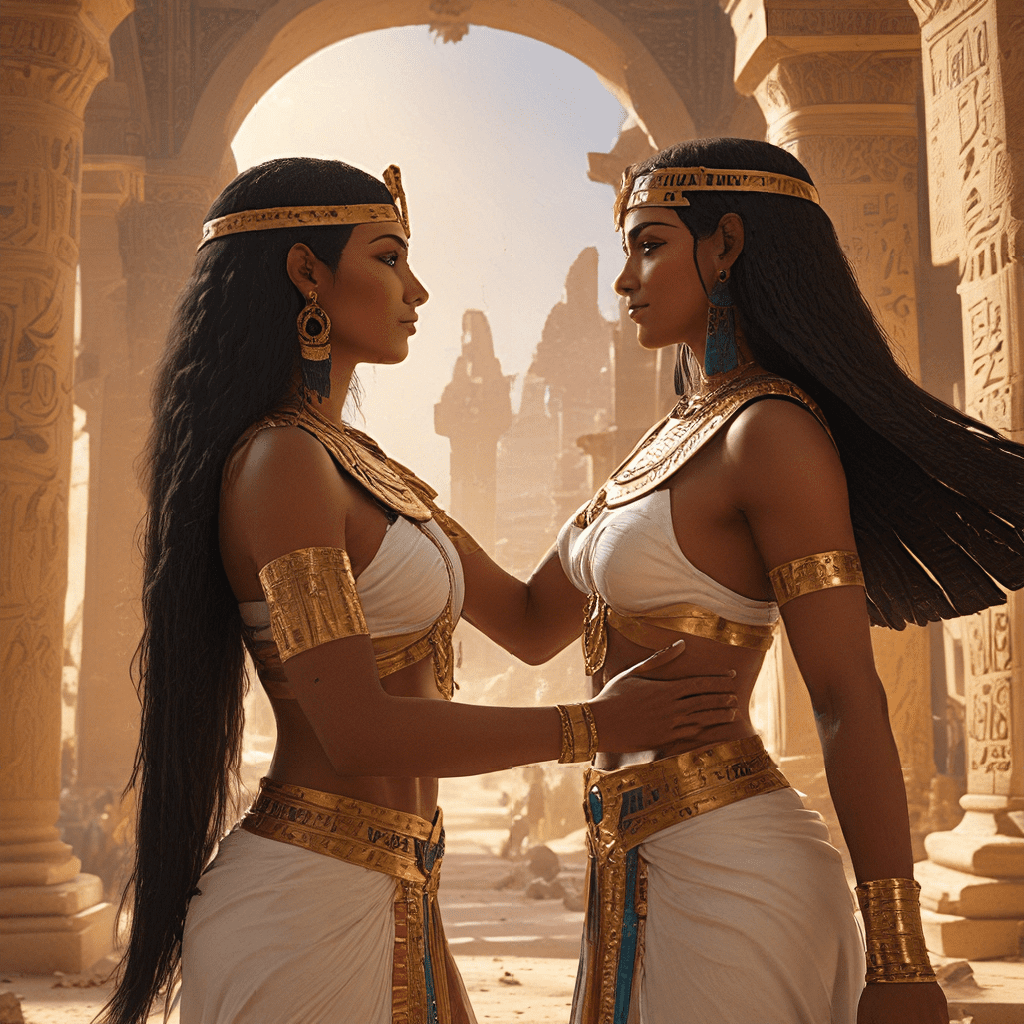The Egyptian Creation Myth: A Timeless Tale of Love and Loss
I. Introduction
The Egyptian creation myth, a captivating tale steeped in symbolism and rich imagery, offers a profound insight into the ancient Egyptian worldview. This enduring narrative, passed down through generations, reflects their deep understanding of the universe and the forces that govern it. It speaks to their belief in a divine order, where creation, love, loss, and the cyclical nature of existence are intertwined. The myth’s central themes of love and loss, woven into the fabric of creation itself, resonate with audiences across cultures and time.
II. The Primordial World: Nun
Before the emergence of the world as we know it, there existed only Nun, a vast, boundless ocean of primordial waters. This state of nothingness represents the potential for all that is to come, a cosmic womb harboring the seeds of creation. Nun, the source of all existence, is an embodiment of the formless void, a state of pure potentiality. Within this chaotic, watery abyss, the universe lay dormant, awaiting its awakening.
III. The Emergence of Atum
From the depths of Nun, Atum, the self-created god, emerged. He was the first being, the singular point of creation, who brought order to the chaos. Atum’s creation is often depicted as a self-masturbation, a symbolic act representing the inherent power and potential for life within the universe. This act, though seemingly paradoxical, signifies the ability of the universe to give birth to itself, a concept resonating with the profound mysteries of existence.
IV. The Birth of Shu and Tefnut
Atum, the solitary creator, longed for companionship. Through the power of his word and the act of spitting and sneezing, he brought forth his first children: Shu, the god of air, and Tefnut, the goddess of moisture. These two beings represent the fundamental elements that shape the cosmos and the vital forces responsible for life. Their birth marked the beginning of creation, a process driven by divine love and the desire for connection.
V. The Search for Shu and Tefnut
Atum, a loving father, found himself consumed with worry when his children, Shu and Tefnut, vanished into the chaotic Nun. His search for them, a poignant journey fueled by parental love and concern, reflects the interconnectedness of all things and the importance of maintaining harmony in the universe. This act of searching signifies the inherent responsibility of the creator to nurture and protect the creation. Atum’s journey through the primordial waters also symbolizes the challenging quest for knowledge and understanding of the universe.
VI. The Return of Shu and Tefnut
Atum, driven by his unwavering love for his children, finally found Shu and Tefnut. Their return restored order to the universe and symbolized the triumph of love over chaos. The tears he shed upon their reunion are believed to have given birth to humanity, signifying the enduring connection between divine creation and the human experience. The return of Shu and Tefnut marked a turning point in the creation myth, signifying the restoration of balance and the emergence of a more complex and vibrant world.
VII. The Birth of Geb and Nut
Shu and Tefnut, reunited with their father, gave birth to Geb, the god of earth, and Nut, the goddess of the sky. Their union signifies the concept of duality and the interconnectedness of all beings, representing the complementary forces that shape the universe. Geb and Nut embody the fundamental principles of earth and sky, the foundation of the physical world.
VIII. The Separation of Geb and Nut
Atum, seeking to maintain order and prevent Geb and Nut from perpetually mating, separated them, forcing Nut to give birth only during the night. This separation, a necessary act to ensure the stability of the universe, reflects the cyclical nature of life and the intricate dance between creation and destruction. This pivotal event, though seemingly harsh, sets the stage for the emergence of a more ordered and structured world.




